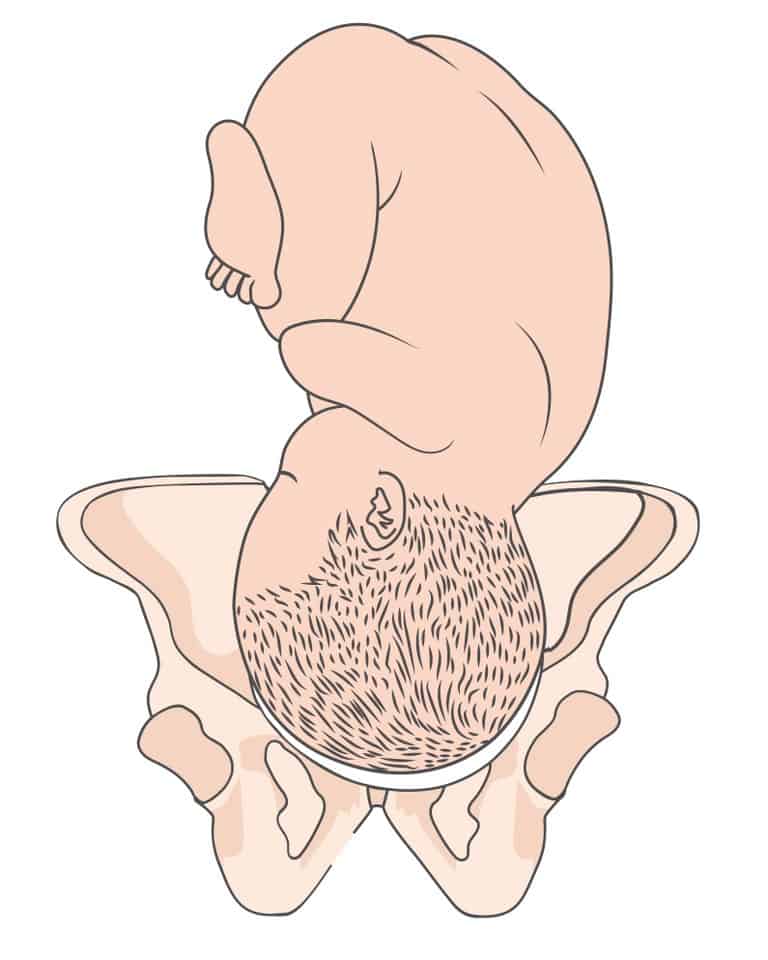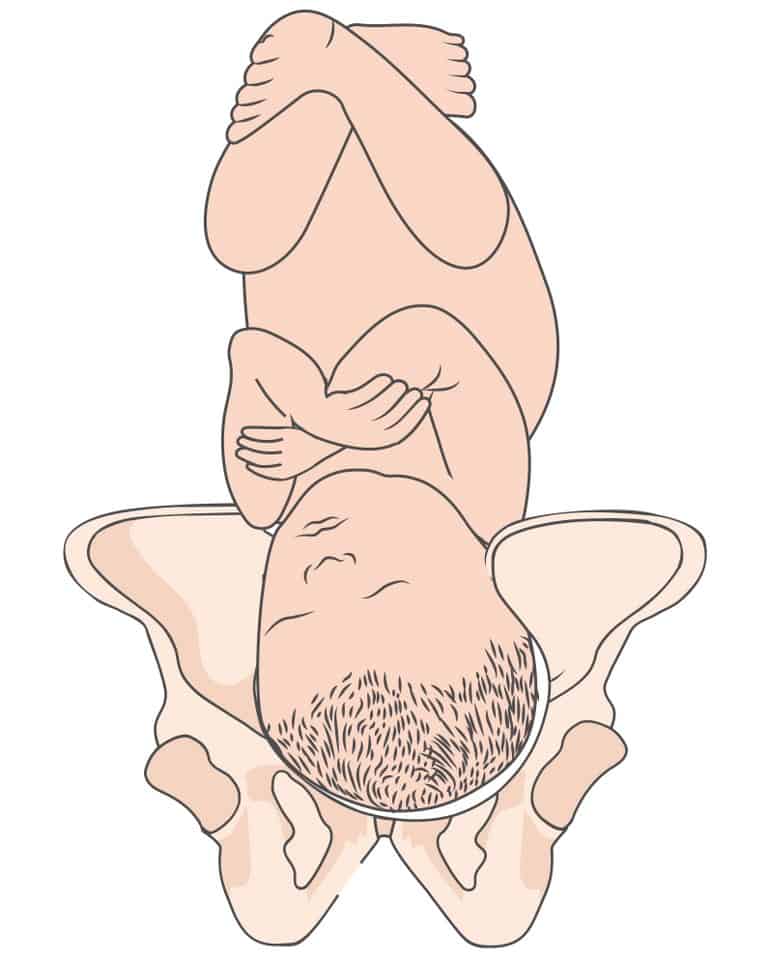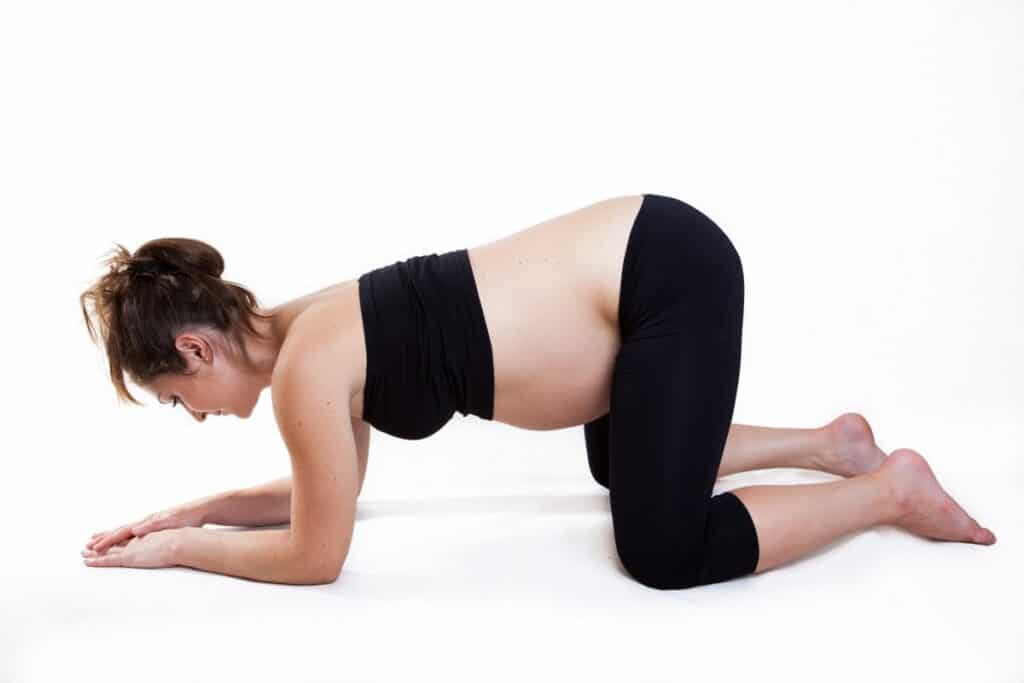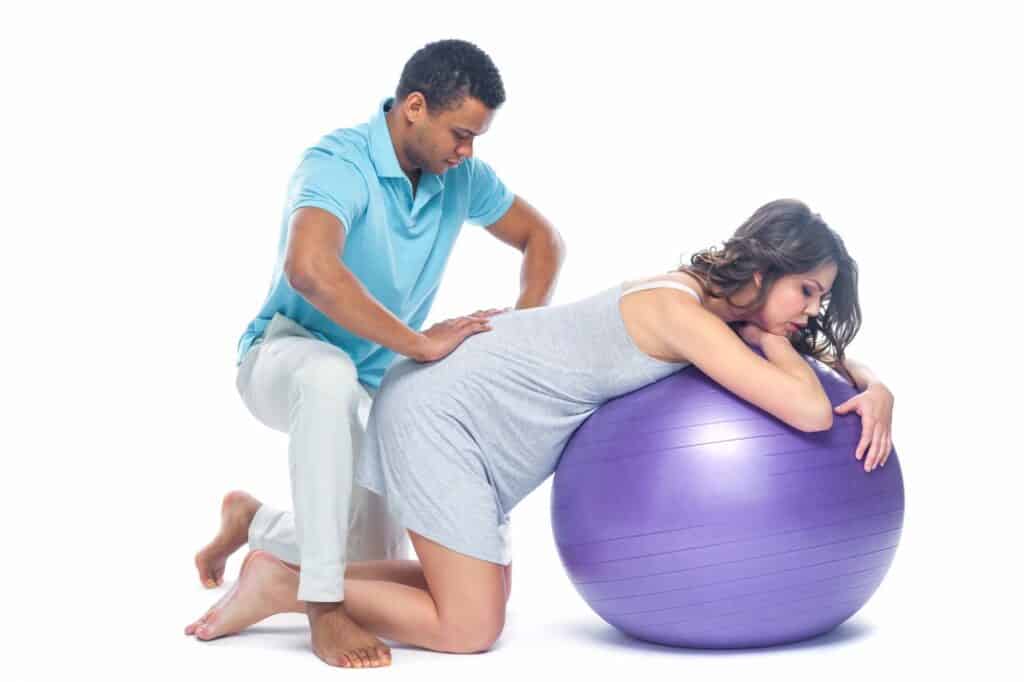Back Labor Basics

After your baby enters your pelvis, they do their best to follow the path of least resistance, find the widest space in the pelvis and begin to rotate. Most babies turn to look at your bum which places their soft face against your spine. (anterior) Between 20-25% of babies, turn the opposite direction (posterior) so that the back of their skull is against your bony pelvis – also known as back labor.

Anterior vs. Posterior Pelvic Paths
There are different paths to take when navigating a pelvis.
If your baby decides to take the less traveled posterior pelvic route, they might later backtrack, taking the time to rotate into the more commonly traveled anterior position. This is one reason posterior labors can take longer. They may also stay the course and crown in that posterior position which is called “sunny side up”. When their bony skull is pressing against your bony pelvis, contraction sensations are usually more intense in this low back area. Because of the baby’s position as it descends, people can also feel pressure between contractions sometimes.
When a baby’s soft head is molding through the pelvis on an anterior path, it places the smallest diameter of the head on the cervix which can help facilitate dilation. Their mushy face feels a little softer & easier against your back during contractions and in general, is a more comfortable & optimal birth position.
Sidenote: Every body is different, and everyone has different sensations in labor. Some people feel intense pain or pressure in their back in labor regardless of their baby’s position.
Back Labor Circuit
A circuit can be used any time labor seems to need a boost:
- long warm-up phase (prodromal labor for days)
- irregular contractions (not rhythmic or consistent)
- stalled labor (contractions stop after a time of consistency)
- suspected back labor (sensations concentrated in your back)
- slow labor (repositioning can boost labor sometimes)
- additional comfort measures can be added: ice/heat to low back, counterpressure, sacral press, massage
A circuit is a cycle of repetitive movements that fall into 3 different categories: (hold each position for 15 minutes)
- disengage the baby with chest lower than hips
- reposition baby with positions that facilitate movement
- re-engage baby deeper into the pelvis
Before you begin:
- find a comfortable place – bed, couch or yoga mat on the floor
- use props like pillows & partners for extra assistance
- be prepared to move through the circuit a few times until you feel a shift or decide to take a break
#1: Disengage
The higher your bum and lower your chest, the better. Use pillows and a padded surface to really bolster you up and provide comfort.
Possible positions:
- full moon
- puppy pose


#2: Promote Movement
Find positions that allow gravity to help your baby’s spine swing towards your front. They may promote rotation & proper alignment.
Possible positions:
- hands-knees (hammock/table top)
- hands-knees with chest supported on ball/chair
- add in pelvic tucks or hip spirals for extra help
- passive side-lying pelvic opening (works great with an epidural too)
#3: Re-engage
Using upright, gravity-loving positions will help your baby move deeper into the pelvis.
Possible positions:
- slow dancing with partner
- abdominal lift (your back to your partner’s front, tuck pelvis, lift baby and hold)
- supported squat on a birth ball
- big hip circles on a birth ball
- forward leaning on partner, wall, furniture
- + pelvic asymmetry for more internal space
- walking up stairs sideways
- curb walking (one foot on the curb and one foot on the road)
- side lunges while holding onto partner or support
- lunge with one foot on a short stool
- standing hip circles




